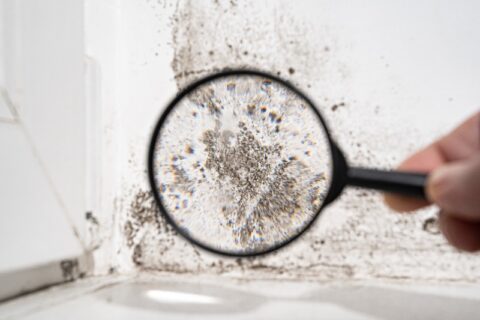Steps in Professional Mold Remediation
Mold ranges in appearance from powdery white patches to slimy pink streaks to fuzzy black spots. No matter what it looks like, finding mold in your home or business is off-putting, not just because it’s unsightly but because it’s a health hazard demanding professional attention. When you call a mold remediation company for help, expect the team to follow this meticulous, step-by-step process:
- Initial assessment: The first step is to conduct a detailed inspection of your property, revealing the location and extent of the mold growth. Experts use specialized equipment to detect moisture and mold hiding behind walls and under floors. This assessment is crucial for devising an effective remediation plan tailored to your situation.
- Source identification: Mold spores are everywhere, but they need a consistent source of moisture to settle and grow on surfaces. Professionals take the time to identify the water source allowing mold to grow, such as a plumbing leak, condensation, or residual flood damage. Once they find the source, they may suggest or implement fixes.
- Contents pack out: This step involves physically removing contents from the building. Both unaffected items and mold-damaged belongings are removed so meticulous building cleaning and restoration can take place. Non-porous materials like glass, metal, and plastic can often be restored, while porous materials like clothing, books, and wood furniture may need to be discarded.
- Containment: To prevent the spread of mold spores during the remediation process, professionals isolate the affected area using physical barriers, such as plastic sheeting, and negative air pressure to contain the spores. Technicians also wear protective gear to safeguard their health.
- Cleaning and drying: After contents have been removed from the building, moldy surfaces within the structure are cleaned and disinfected. This may include HEPA vacuuming, applying biocides, and antimicrobial treatments. Proper drying is also crucial to eliminate residual moisture that could spur the return of mold growth. Dehumidifiers and air movers speed up the process.
- Material restoration and replacement: Restoring or replacing damaged materials occurs once the area is mold-free and dry. Advanced content restoration techniques increase the chance of salvaging as many belongings as possible. The building itself may require minor repairs, such as replacing drywall, insulation, and carpeting, or more significant reconstruction work to restore its pre-mold condition.
- Prevention: The final step involves advising homeowners on how to prevent future mold growth. The focus is on maintaining a dry environment to ensure your mold remediation services are a long-term solution rather than a temporary fix. Recommendations might include improving ventilation, using dehumidifiers, and promptly addressing plumbing or roof leaks.
At Pacific Flood Restoration, we take the health risks associated with mold growth very seriously. Our dependable, courteous, and professional mold removal team provides top-notch services with your safety and satisfaction in mind. We offer 24-hour, on-call mold remediation services, ensuring high customer care when you need us most. For professional mold restoration in San Diego or North County San Diego, please contact us at 760-815-3033.


